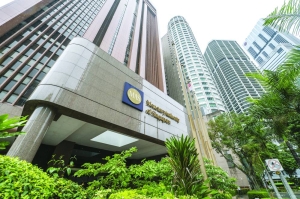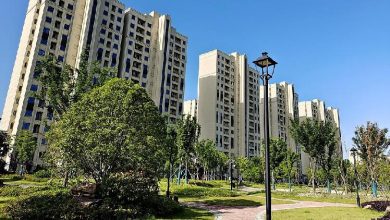Singapore central bank keeps policy unchanged during price risks


The Monetary Authority of Singapore. Singapore’s central bank kept its monetary policy settings unchanged for a fifth straight time in a widely anticipated move and reiterated that inflation will cool to about 2% in 2025, opening the window slightly for easing to begin next year.
The Monetary Authority of Singapore (MAS), which uses the exchange rate as its main policy tool rather than interest rates, maintained the slope, width, and centre of the currency band, it said in a statement yesterday. That will keep the local dollar on an appreciating path to blunt imported inflation.
“Current monetary policy settings remain appropriate,” it said, extending a pause after five rounds of tightening between October 2021 and 2022. It followed data earlier this month of the city-state’s slowest core inflation in more than two years and faster-than-expected economic growth. The MAS decision comes ahead of rate reviews by the US Federal Reserve and Bank of Japan next week.
With the statement suggesting that the MAS is likely to keep policy unchanged this year, Singapore’s dollar held steady at 1.34 against the greenback.
“Overall, the statement is balanced,” said Khoon Goh, head of Asia research at Australia & New Zealand Banking Group. “There is nothing here to signal that an October move is pending. I maintain my view that easing is a 2025 story.”
“Barring renewed shocks to costs, core inflation should step down more discernibly” in the fourth quarter, the central bank said. It reiterated a forecast during its July 18 annual report that price gains will slow “further to around 2% in 2025” after averaging 2.5-3.5% this year.
The central bank said it expects headline inflation to come in between 2-3% this year, lower than the 2.5-3.5% range seen previously.
Since its last decision in April, data showed Singapore’s economic recovery has gained momentum in the second quarter while core inflation, which is tracked by the MAS, eased below 3% in June after staying stuck for three straight months. Slowing price gains allows policymakers the room to keep monetary settings conducive to support economic growth amid rising geopolitical tensions.
The MAS kept a “two-sided inflation risk outlook,” said Selena Ling, chief economist at Oversea-Chinese Banking Corp Ltd. “This affords maximum flexibility for the upcoming policy meetings while awaiting the more significant step-down in core inflation” in the fourth quarter.
Ling pointed to a sentence in Friday’s statement which suggests policymakers “are monitoring the sequential pace of change for core inflation, so October window may really be open” for easing policy. Her baseline scenario is for 2025, though.
Brian Tan, a senior regional economist for Asean at Barclays Plc, reckons the 2% core inflation forecast is “notable,” adding he expects “policymakers would continue to see little need to ease or tighten” the Singapore dollar’s nominal effective exchange rate, or S$NEER, band parameters in the near term.
“With growth seen strengthening even further in the second half of the year, the central bank is likely to maintain its tight settings through year-end,” says Tamara Mast Henderson, economist at Bloomberg.
The MAS, which guides the local dollar against a basket of its major trading partners and adjusts the pace of its appreciation or depreciation by changing the slope, width and centre of the currency band, also reiterated its expectation for economic growth to come closer to the upper half of a 1-3% range forecast for this year.
The central bank doesn’t disclose details of the basket, the band nor the pace of appreciation or depreciation.







